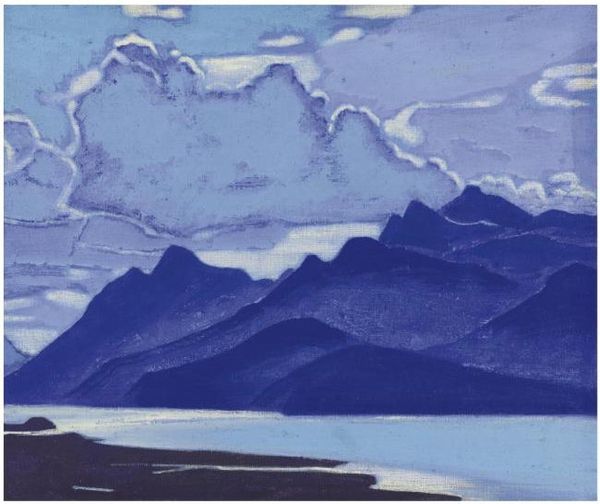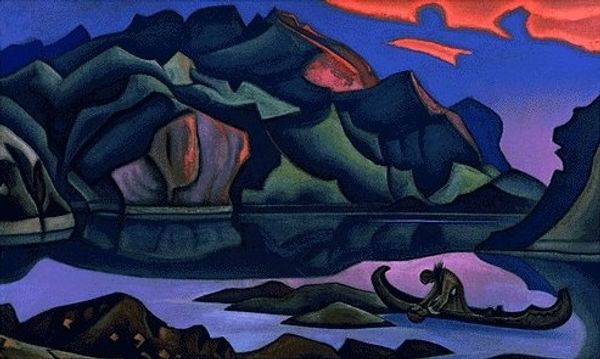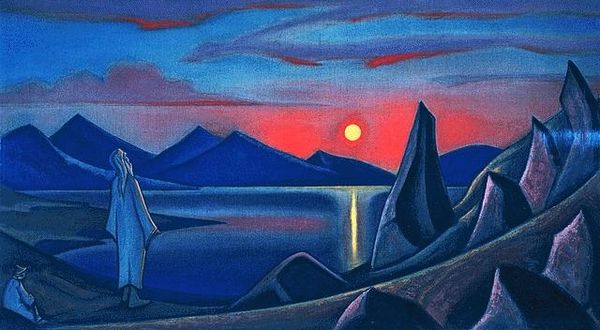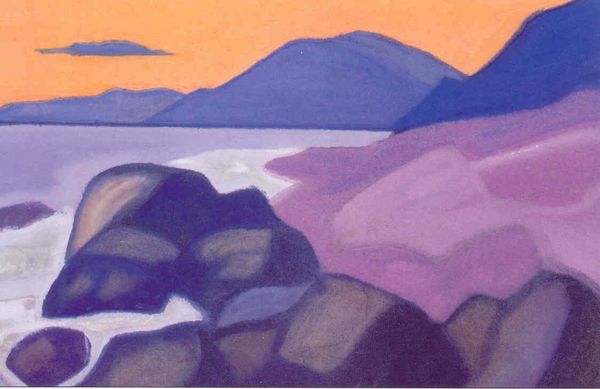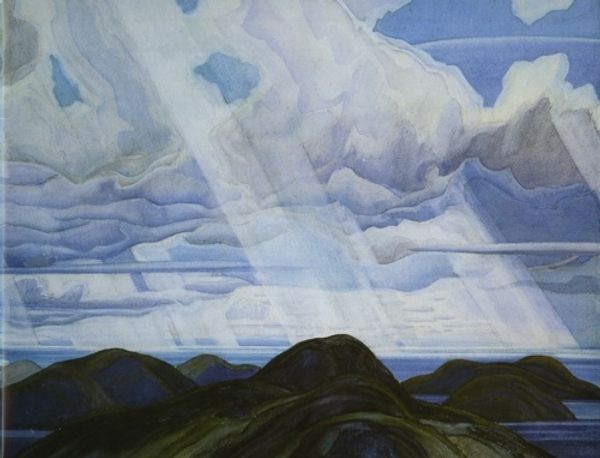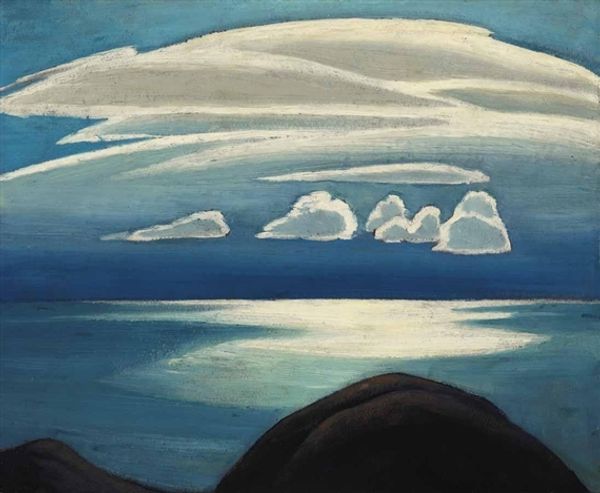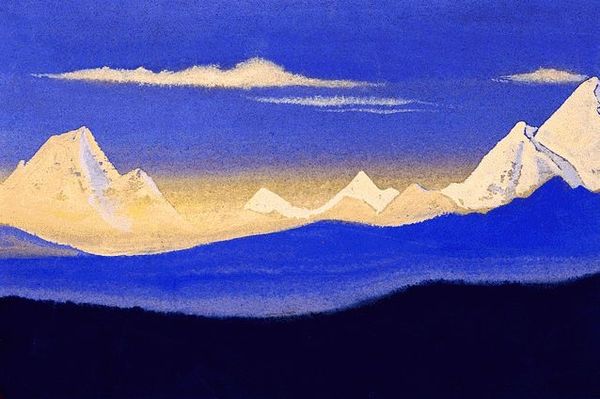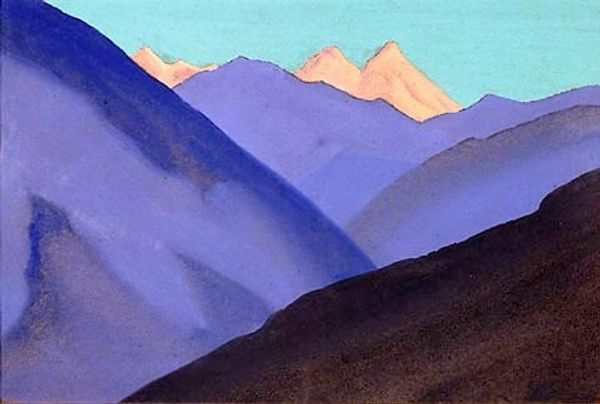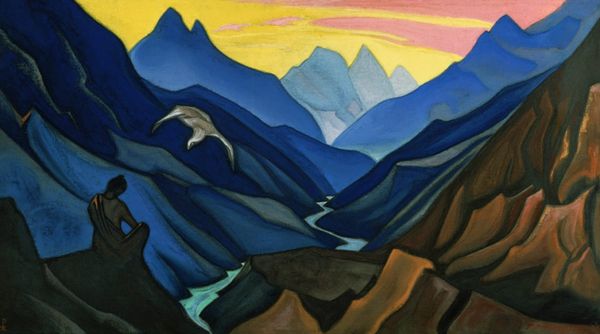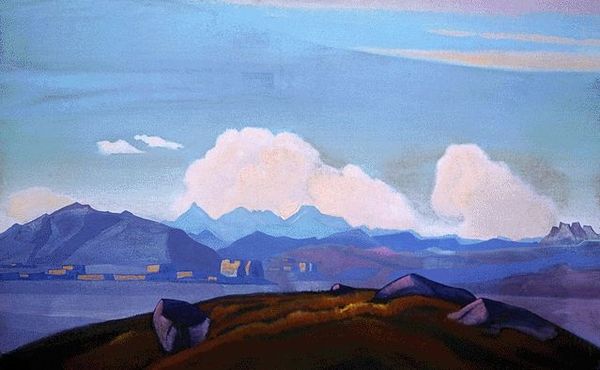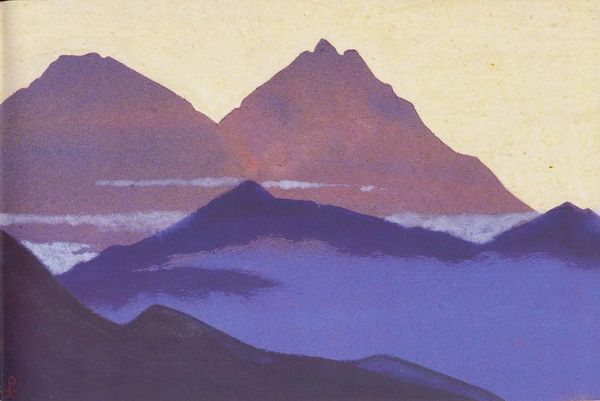
Dimensions: 100.2 x 149 cm
Copyright: Public domain
Editor: This is Nicholas Roerich's oil painting, "Treasure", created in 1919. I'm struck by how dreamlike it is; the subdued colors and flattened perspective create a sense of otherworldly calm. How do you approach an interpretation of this piece? Curator: From a formalist perspective, the immediate impact is derived from Roerich's calculated use of color and form. Notice the limited palette, dominated by variations of purple and brown. How does this restrain our emotional response? Editor: I see how the limited color palette and broad strokes simplifies the landscape, turning the mountains and clouds into abstract shapes. This definitely encourages a meditative feeling over realistic observation. Curator: Precisely. The flatness of the composition is also significant. There's minimal depth, causing all elements to exist on a single pictorial plane. What is the impact of this on the image as a whole? Editor: The lack of perspective intensifies the two-dimensionality. It’s almost like looking at a stage set rather than a vista, reinforcing that dreamlike feeling I mentioned before. Curator: Exactly. In other words, this dreamscape could be analyzed using principles of structuralism and even the use of signs, since, in the end, there isn’t a lot of emphasis placed on realism. Through such means, a landscape turns into pure aesthetic thought and semiotics. Editor: So by emphasizing color and form over realistic depiction, Roerich prioritizes the aesthetic experience itself. That gives a lot more weight to the pure feeling of the piece, regardless of what "treasure" might mean literally. Curator: Indeed. Considering "Treasure" in terms of line, shape and tone allows an engagement with its fundamental construction. Perhaps this provides a richer reading, by inviting the viewer to explore it not as a landscape, but an essay of pure color. Editor: That really shifts my understanding of the piece; I see it less as a scene and more as a construction now. Curator: And therein lies the strength of formalist engagement; stripping away external narratives and seeking what is, structurally.
Comments
No comments
Be the first to comment and join the conversation on the ultimate creative platform.
